Five ingredients is all you need to make my easy tempura sauce. Salty, savory, a little sweet, and full of umami, this sauce only takes 15 minutes to make from start to finish.
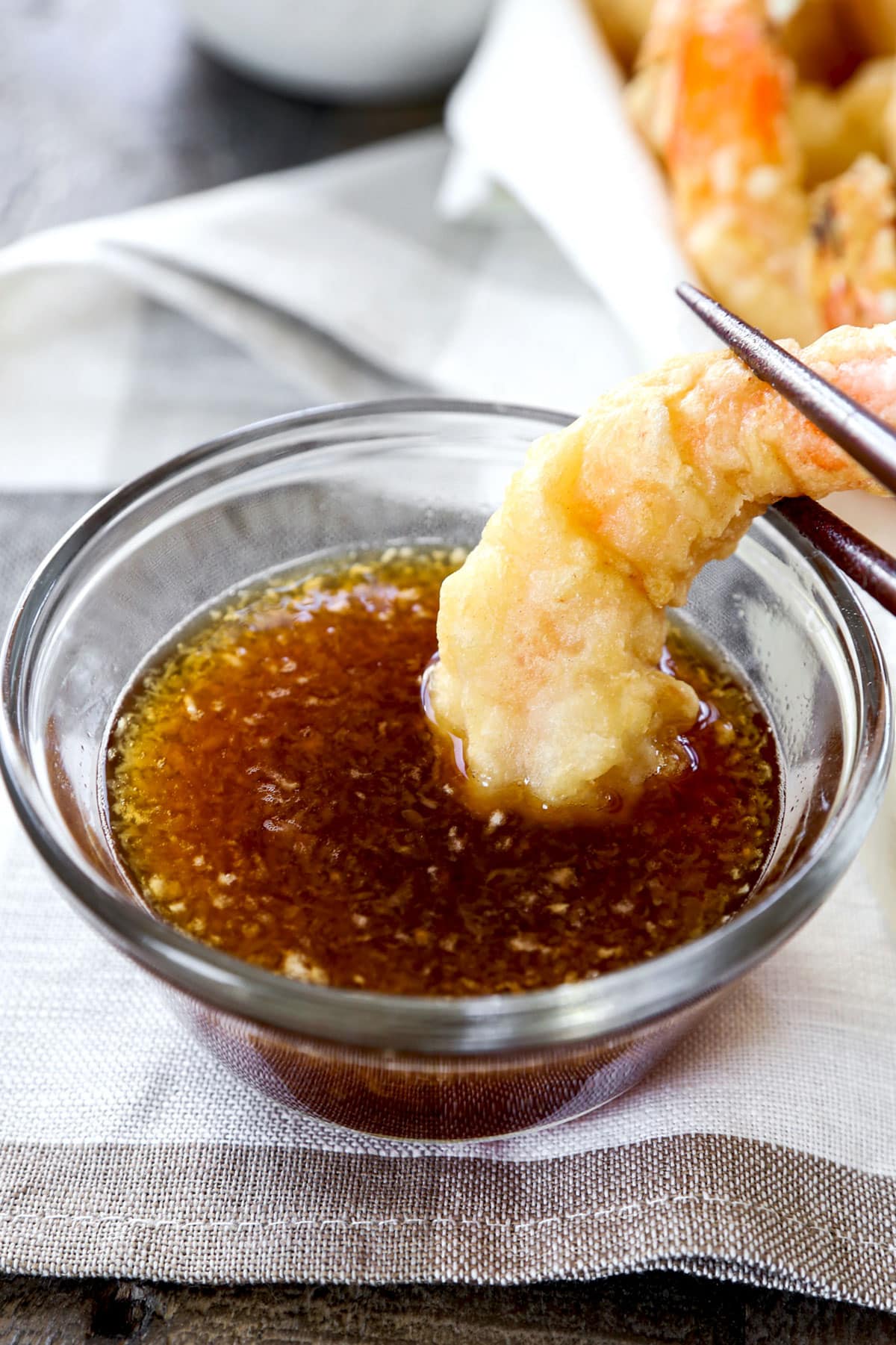
I always keep a bottle of tempura sauce ready to use in my fridge because of its versatility. Not only do I use it for vegetable and shrimp tempura, I also use it for donburi dishes, as a seasoning for steamed vegetables, as a sauce for chicken and tofu dishes, and as a dipping sauce for noodles.
My tempura sauce recipe is the quintessential dipping sauce you find in Japanese restaurants. As you may have noticed, some restaurants offer tempura sauces that are more concentrated in flavor while others like to stick to something more delicate. Mine is somewhere between the two and is easy to tweak so you can enjoy it the way you like it. Let me show you how to make it.
Table of contents
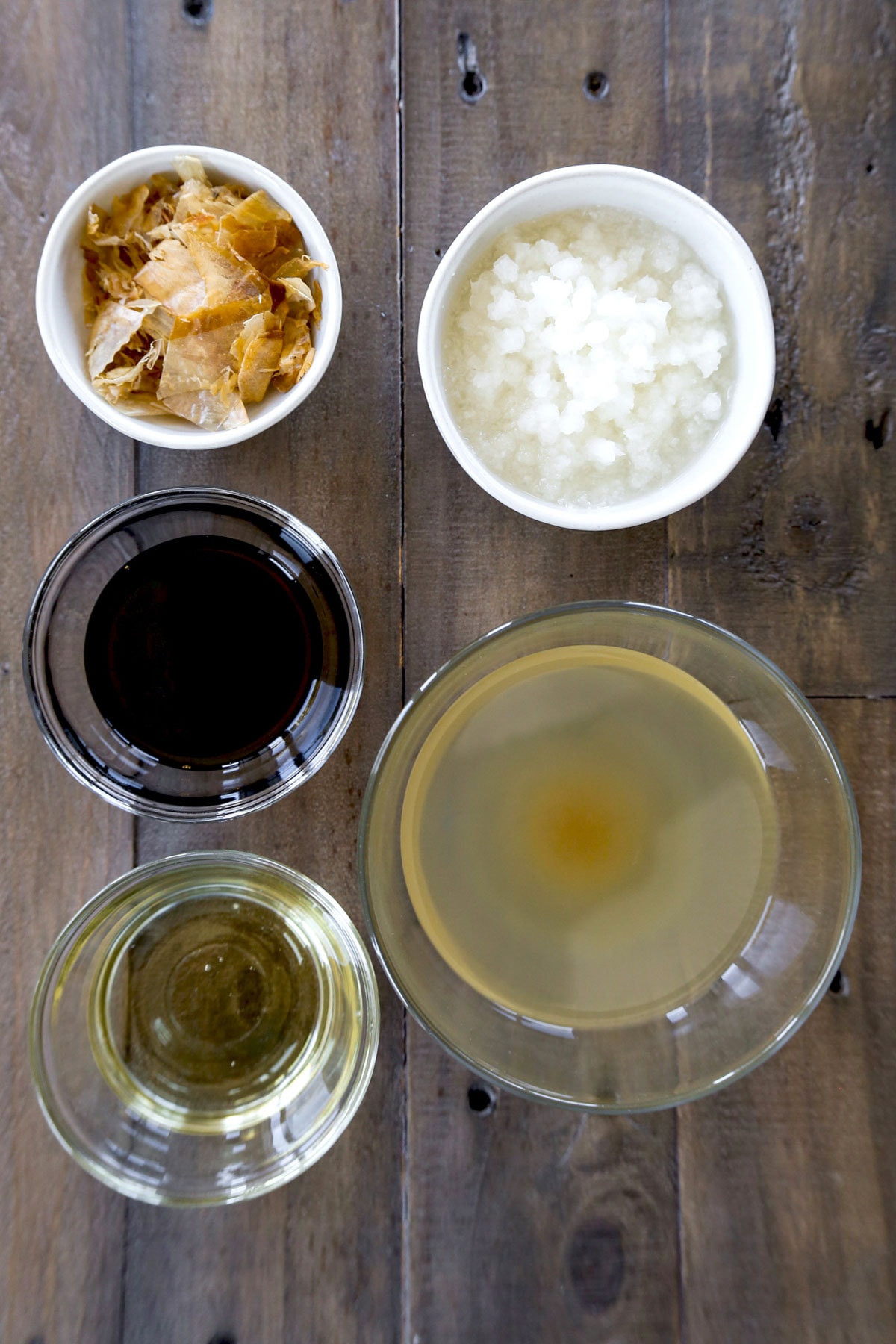
Ingredients
- Dashi: You can make the dashi from scratch using my recipe here, or use dashi powder. The ratio of dashi powder to water is about 1 teaspoon per 1 cup of water.
- Soy Sauce: I’m using 3 tablespoons of Japanese soy sauce since I prefer my tempura sauce to be on the milder side. But feel free to add more if you like it more punchy. Just make sure to add more mirin as well to balance the overall taste of the sauce.
- Mirin: Mirin has a sweet taste that’s also slightly pungent. The combination of mirin and soy sauce is very common in Japanese cooking, especially in sauces, as it tames the saltiness of soy sauce and adds a subtle sweetness.
- Bonito flakes: I like to infuse the sauce with extra umami by adding 1/4 cup bonito flakes in the end, when the heat is turned off. The flakes only need to sit in the sauce for 20-30 seconds and are then discarded.
- Daikon: Daikon is a Japanese radish that’s thick and long, sweeter and milder than the little pink and white type we are used to seeing in supermarkets. Since the skin is quite thick, it’s best to use a knife instead of a peeler to remove it. To prepare the daikon, keep peeling until you get to the part that’s more clear and watery. That’s where the good stuff is! When daikon skin isn’t peeled properly, it can add bitterness to the sauce.
Recipe Variations
- Add some heat. Stir in a little grated ginger to add a heat to the sauce.
- Make it vegan: Omit the use of bonito flakes and use kombu dashi (made of kelp) instead. You can easily make kombu dashi at home with my recipe here, or buy the powder here.
- Make it low sodium: Use tamari instead of soy sauce. Tamari contains around 233mg sodium per tablespoon, compared to regular soy sauce which contains around 879mg sodium per tablespoon.
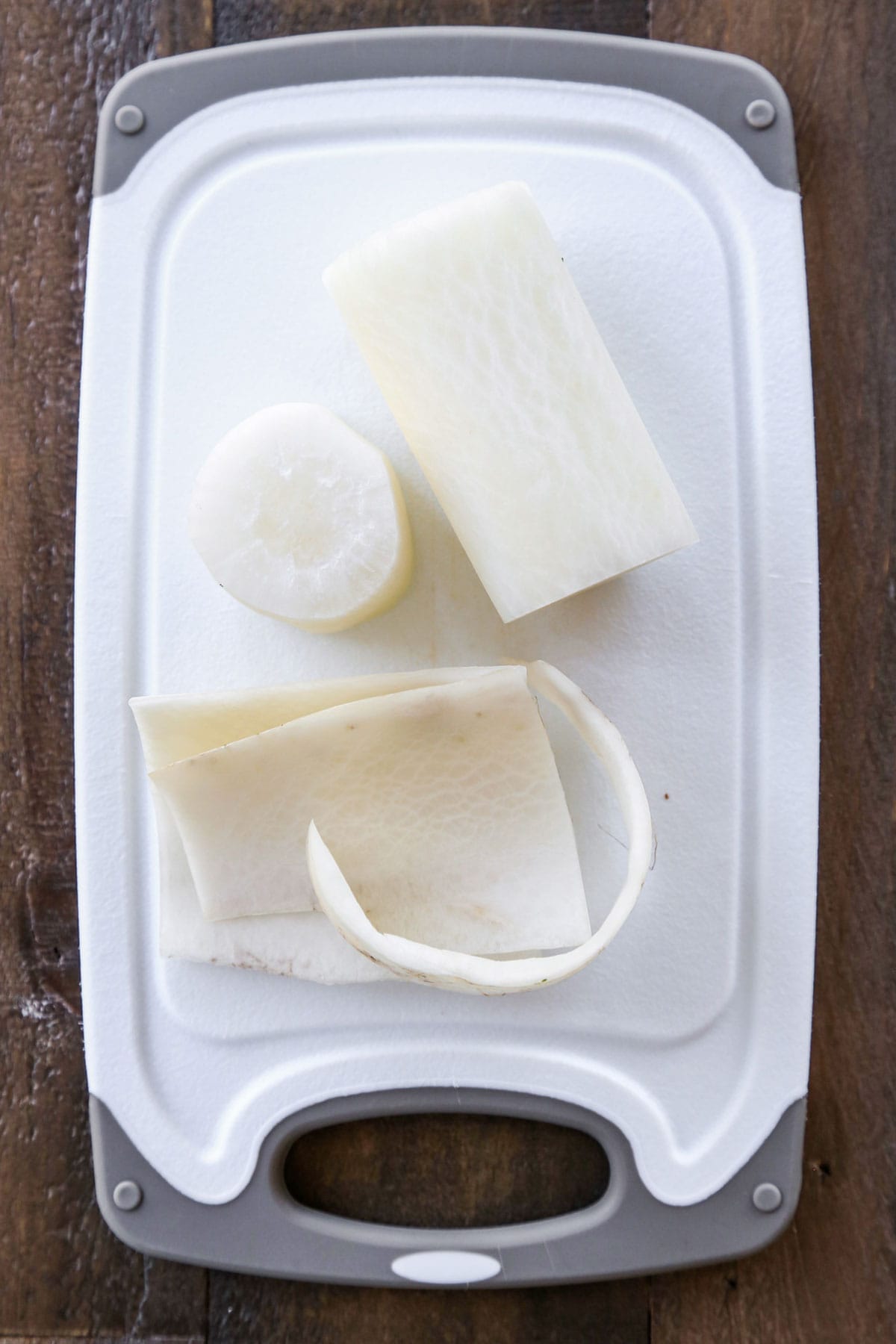
How to Make This Sauce
- Peel the daikon and grate it. As previously mentioned, make sure you are removing the entire thick exterior of the daikon radish so you don’t get any of the bitter taste. An easy way to do this is by using a knife and take out about 1/4-inch thick ring around the outside of the daikon. Peel it in a similar way you would peel an apple with a knife. Grate the daikon and place it a bowl to the side.
- Grab a small pot and add the dashi, soy sauce, and mirin. Place the pot on a burner and turn the heat to medium. When the sauce is boiling, turn the heat off and add the bonito flakes (katsuobushi). Leave for 20-30 seconds.
- Strain the sauce through a sieve to remove the bonito flakes and discard them.
- Divide the sauce among dipping bowls and add 1-2 tablespoons grated daikon to each bowl. Serve with shrimp or vegetable tempura.
Expert Cooking Tips
- Use Japanese soy sauce. I recommend only Japanese soy sauce when making tentsuyu because it’s more rounded in flavor and has more depth, compared to other types of soy sauce.
- Use real mirin. I understand that it might be difficult for many readers to find real mirin since it’s such a rare thing to see in the US and Canada, but believe me when I say it’s worth the hunt. Real mirin tastes completely different than mirin style products because it contains around 14% alcohol, and is only made of rice, koji, water, and salt. Most products found in supermarkets contain less than 1% alcohol and are mostly made of corn syrup. Unless you live close to a Japanese supermarket, the best way to find it is through Amazon. The Kawashimaya brand is available there and is a delicious option to consider!
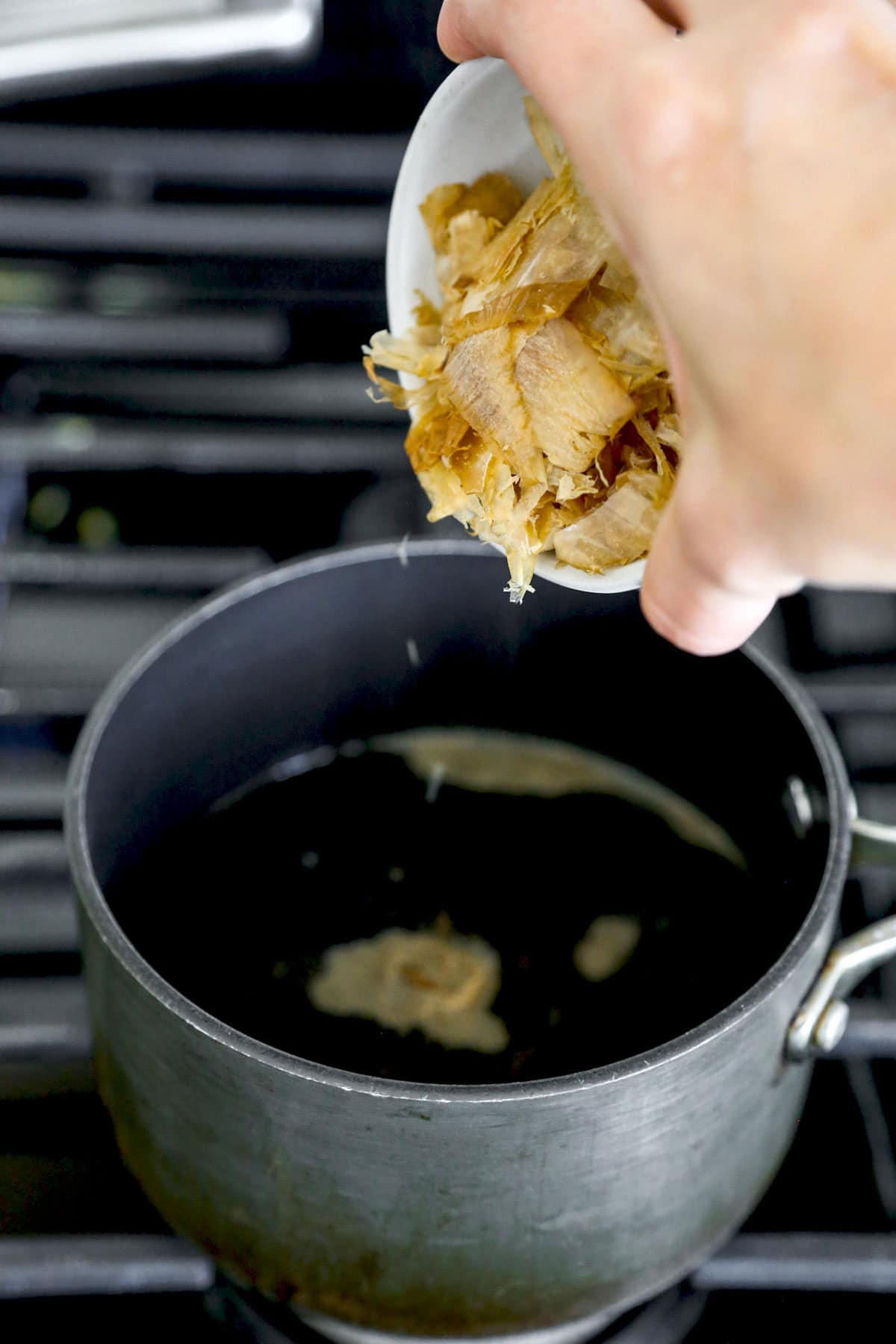
Storage
The tempura sauce must be stored separately from the grated daikon. If they have already been combined, the sauce will not keep for more than a day.
- Sauce: Keep the leftover tempura sauce in an airtight container and refrigerated for up to 6 weeks. To freeze it, pour the sauce in ice cube trays and freeze. Once the sauce is frozen, take it out of the trays and transfer the frozen cubes to a storage container. This makes it easier to portion out servings so you don’t have to thaw more than you need to. This way it will keep for up to 3 months.
- Grated daikon: Transfer the grated daikon to a storage container and refrigerate for up to 5 days. You can also freeze the daikon! Drain the excess liquid from the grated daikon and place it in a storage bag or container. Freeze for up to 3 weeks.
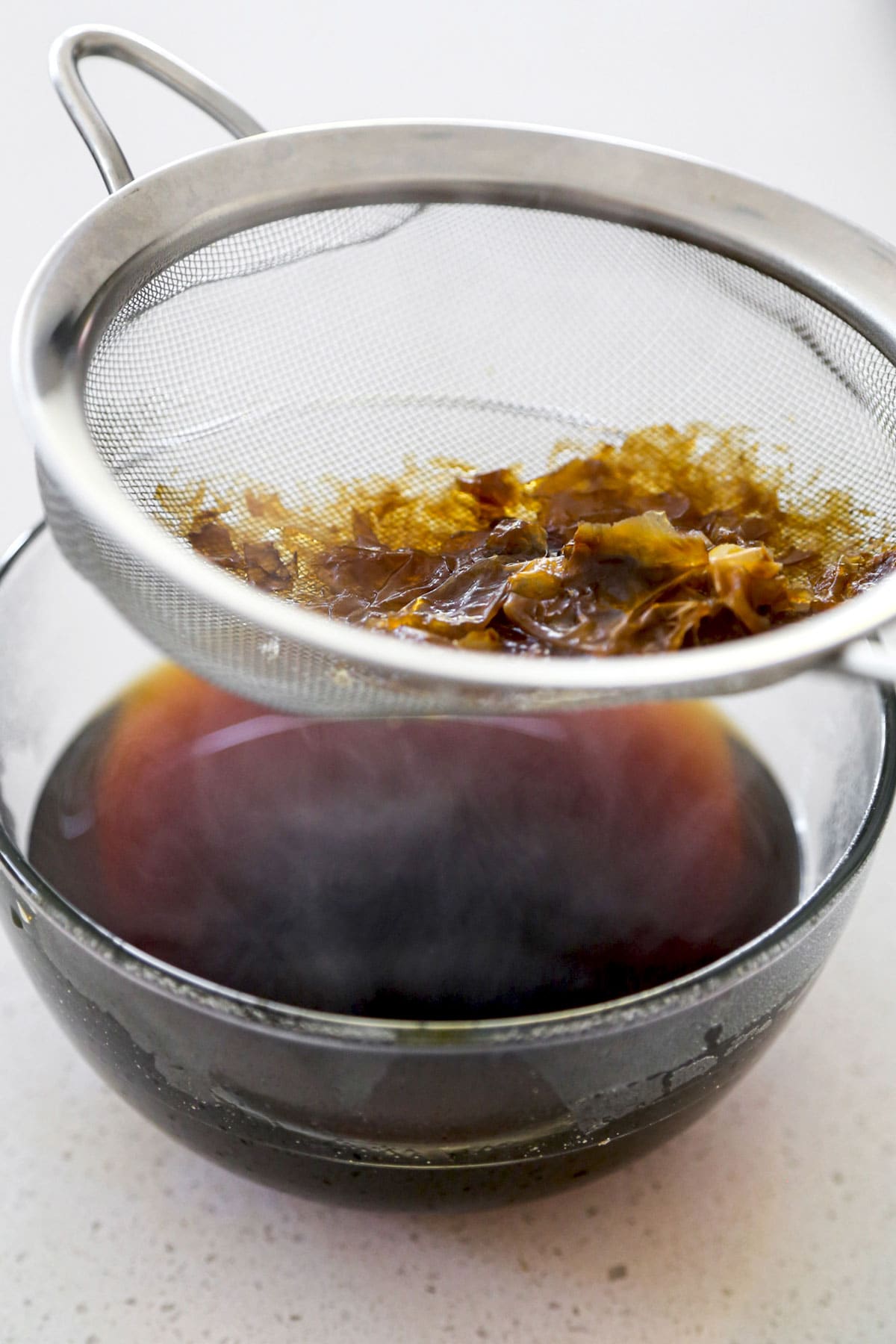
What To Serve With This Sauce
As it states in the name, tempura sauce is made for tempura! But it can also be served as a dipping sauce or flavoring for many other dishes. Often times in Japan, people will swap regular tsuyu for tentsuyu because they are so easily interchangeable. Some of the more popular ways to use tempura sauce are as a dipping sauce for soba noodles, as a seasoning for donburi, as a sauce for steamed or grilled vegetables, or as a flavoring for chawanmushi.
More Delicious and Easy To Make Japanese Sauces
Frequently Asked Questions
I don’t recommend you do that since the strong taste of sake will overpower the delicate flavors of the sauce. Plus, sake alone isn’t sweet enough to complement the savory and salty taste of soy sauce.
Yes, you can absolutely do that! The traditional way to serve tempura sauce is with daikon but feel free to omit it if you don’t like radish.
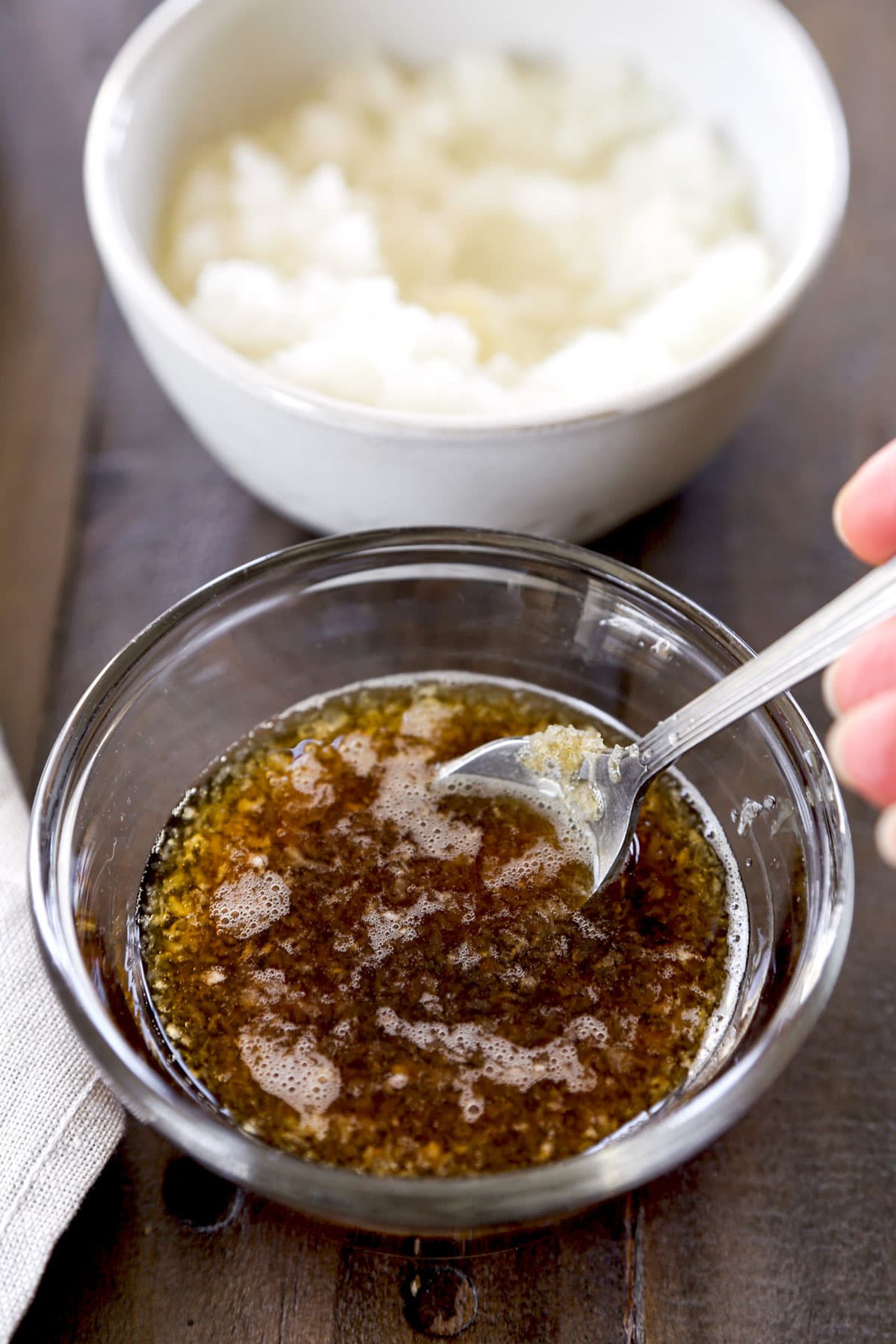
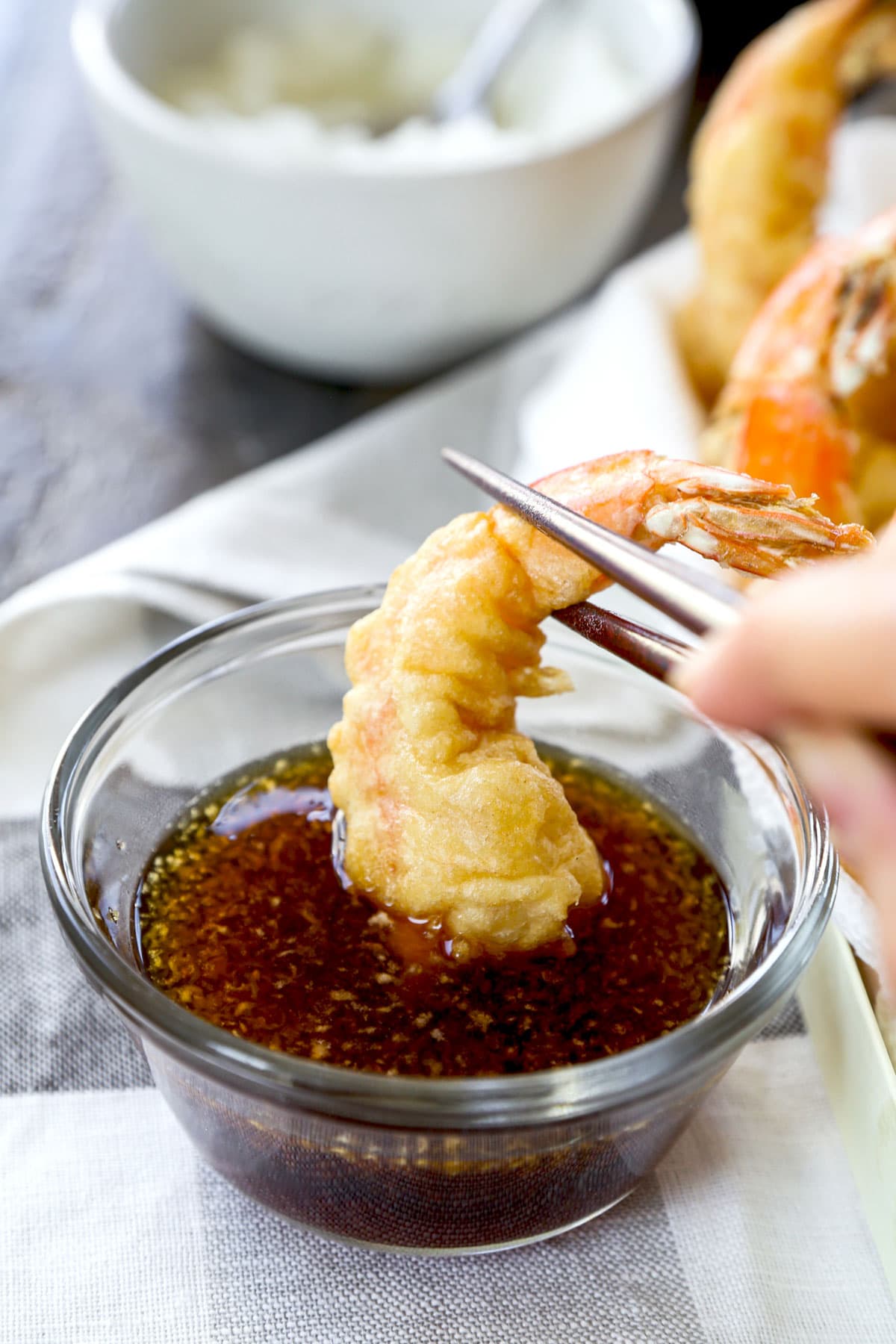
Did you like this recipe? Are there changes you made that you would like to share? Share your tips and recommendations in the comments section below!
Print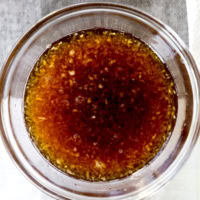
Tempura Sauce (Tentsuyu)
- Prep Time: 10 minutes
- Cook Time: 5 minutes
- Total Time: 15 minutes
- Yield: about 1 2/3 cup 1x
- Category: Sauce
- Method: Boiling
- Cuisine: Japanese
Description
Salty, savory, a little sweet, and full of umami, this sauce only takes 15 minutes to make from start to finish.
Ingredients
- 1 cup dashi broth
- 3 tablespoon soy sauce
- 3 tablespoon mirin
- 1/4 cup bonito flakes
- 3 ounces daikon
Instructions
- Peel the daikon. Start by washing the daikon and peeling in until you get to the part where the flesh is almost translucent. I recommend using a knife – it’s faster and easier to see where the thick outer part stops and the flesh begins.
- Grate the daikon. Grate and set it aside in a bowl.
- Make the tempura sauce. In a small pot over medium high heat, add the dashi, soy sauce, and mirin. Bring to a boil and turn off the heat.
- Add the bonito flakes. Leave them for 20 seconds and strain through a sieve. Discard the bonito flakes or make furikake by following this recipe.
- Serve. Divide the tempura sauce among dipping bowls and add 1-2 tablespoon grated daikon to each bowl.
Notes
To make the sauce stronger: Add an additional 1 tablespoon soy sauce and 1 tablespoon mirin. To make the sauce milder: Use 1 tablespoon less of both soy sauce and mirin. Make it vegan: Omit the bonito flakes and use kombu dashi instead of regular dashi. Make kombu dashi from scratch by following my recipe, or buy it in granules. To lower the amount of sodium: Use tamari sauce instead of regular soy sauce, or use Less Sodium Soy Sauce (not to be confused with light soy sauce).
Nutrition
- Serving Size: 1/4 cup
- Calories: 41
- Sugar: 4.5g
- Sodium: 473.8mg
- Fat: 0.3g
- Saturated Fat: 0.1g
- Unsaturated Fat: 0.1g
- Trans Fat: 0g
- Carbohydrates: 6.4g
- Fiber: 0.4g
- Protein: 2g
- Cholesterol: 0mg















Hi there. Do you have any ways to use leftover Tentsuyu sauce other than tempura? I’m looking to use it in more things since it’s so delicious, but it’s hard to find suggestions online. Thanks!
Hi Sasa! You can use tentsuyu to season stir fries, or add a little to add flavor to noodle soups such as udon, soba, and ramen. It’s delicious! 🙂